The numbers speak for themselves: British Columbia has 25,725 kilometers of coastline, 20,000 lakes, and too many rivers and creeks to count. Simply put, this is paddling paradise. And it’s not just about bucket list-worthy sea kayaking trips or intense whitewater rafting excursions. There are family-friendly floats, multiday canoe routes, and standup paddleboarding beneath snowcapped mountains. It’s also one of the only places in the country—if not the only place—that you can try heli-rafting.
But while British Columbia is unique in that it offers up year-round kayaking, canoeing, SUPing and whitewater rafting opportunities—a claim that few other provinces or territories could credibly make—choosing when to dip your paddle in the water is just as important as choosing where.
That’s why we’ve highlighted the best places to paddle in BC and the best time to visit.
The 10 Best Paddling Destinations in British Columbia and When to Visit
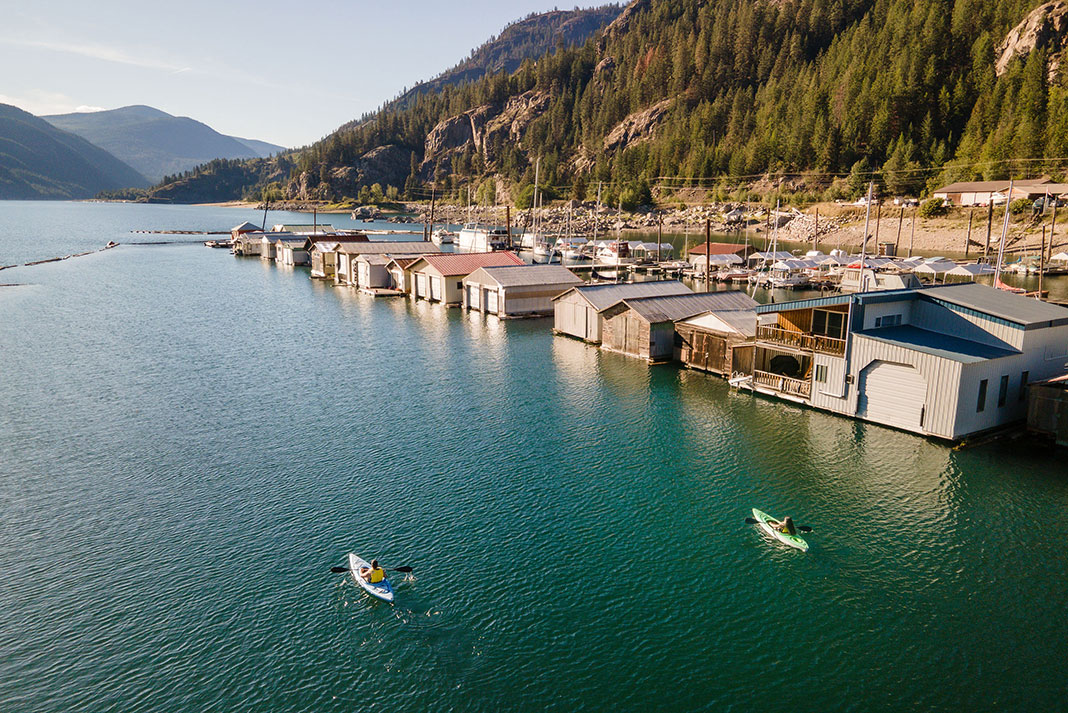
Castlegar: Best for paddlers who want to catch the big one
When to go: Spring
Nestled in the Selkirk Mountains at the confluence of the Kootenay and Columbia Rivers, Castlegar has earned its rightful place on this list. With three major lakes in its vicinity, it offers fun, calm adventures suitable for families—although there’s a bit more adrenaline in the spring when the hydroelectric dams open.
Like many destinations throughout the Upper Columbia Basin, it has a rich and storied history of canoeing—from the birch bark canoes of the Sinixt Nation to explorer David Thompson, who camped near the mouth of the Kootenay River in September 1811. It’s even where Paddle BC—a non-profit organization that promotes watersports in the province—got its start.
More recently though, it’s gained a solid reputation for its kayak fishing, as highlighted by resources like Fishing BC. The 232-kilometer-long Arrows Lakes system is where the largest kokanee salmon in the world was caught—but drop your line, and you might reel in rainbow trout, bull trout, walleye or whitefish. Large schools of sturgeon can also be found in the Columbia River, which you see from atop a SUP with Endless Adventure. Keep an eye out for the big ones, which measure up to three metres long. The local tour operator also offers whitewater rafting on the Slocan River, kayaking on class III and kayak rentals.
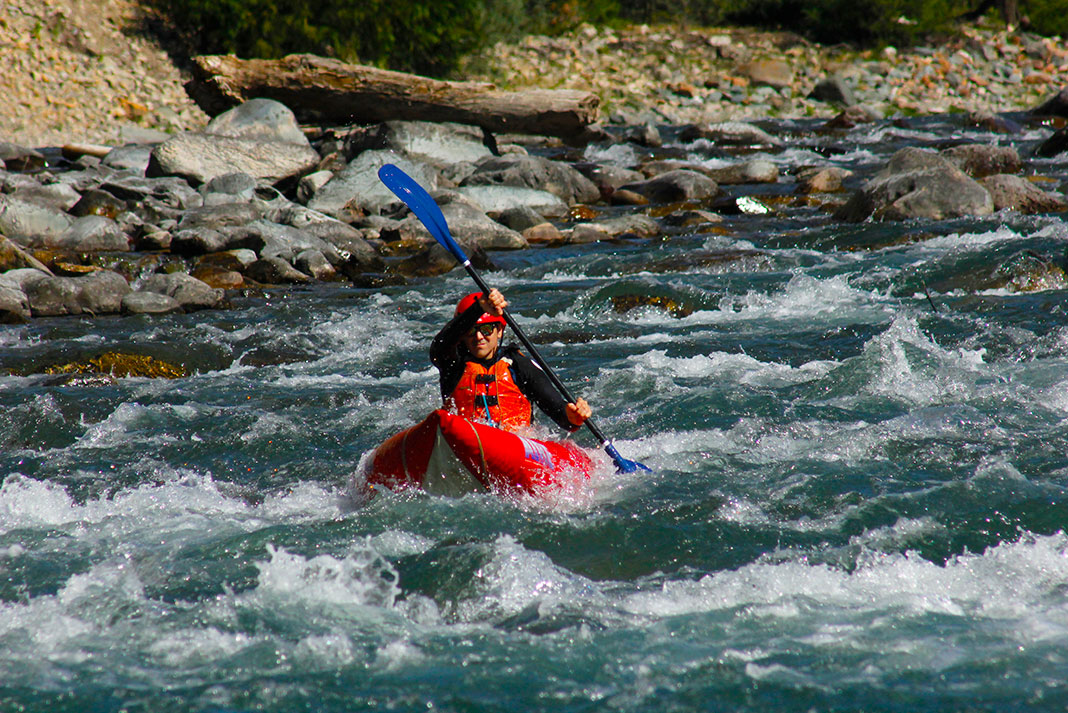
Fernie: Best for paddlers who like their adventure with a side of socialization
When to go: Summer
Internationally, the Rocky Mountain town of Fernie is known for its slopes and après ski scene. But playtime doesn’t end when the snow melts. With dozens of lakes in the region and three major rivers, Fernie is a multi-adventure playground that will appeal to a range of skill levels.
First up, there’s the Bull River, found about a 90-minute drive west of Fernie. Kayakers and whitewater rafters head here in early spring for big water (class II, III and IV rapids). It’s runnable until late fall, which is when it transforms into a calmer route that’s slow enough to admire the wooded shorelines and spot deer drinking from its edges.
It’s not to be outdone by the 220-kilometer-long Elk River, with its hoodoos, towering canyon walls and great wildlife viewing—including mountain goats and eagles. Whitewater enthusiasts travel here in the early spring for the more technical middle section, which includes the Leap of Faith, a 36-foot waterfall. As with the Bull, the Elk becomes more family-friendly later in the season.
Fernie whitewater rafting is incomparable, but if you’re looking for a social atmosphere minus the rapids, you’ll find the answer at Tunnel 49. The tour operator also hires out a “SUPSquach.” The mega SUP fits up to eight adults, making it a party boat for paddlers.
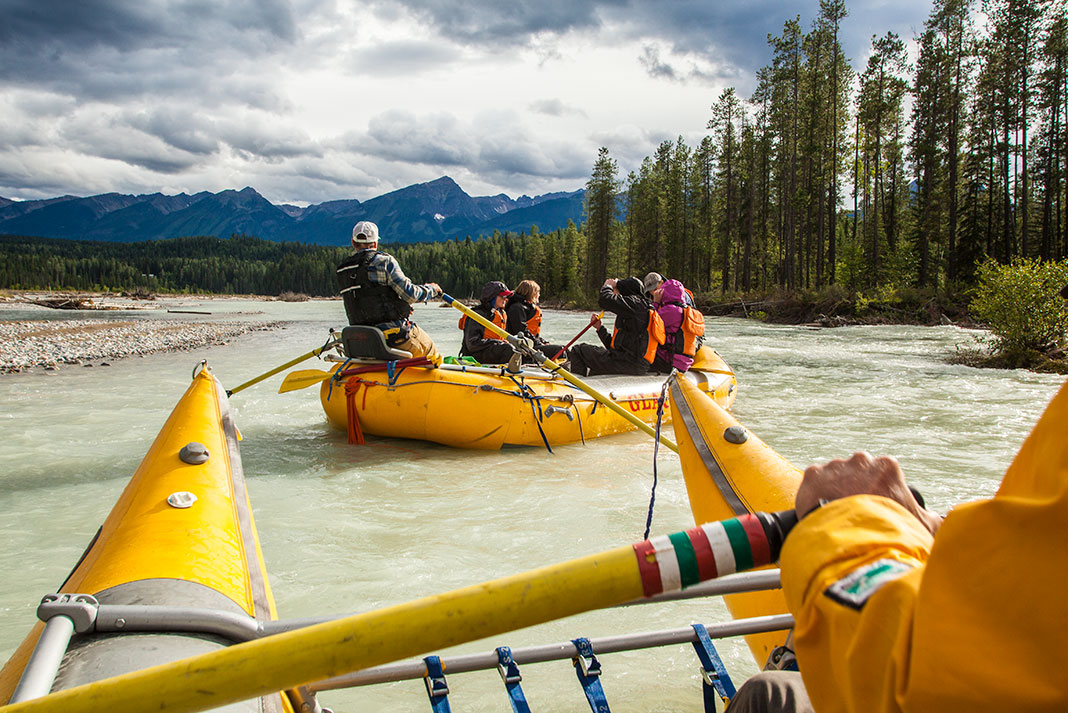
Golden: Best for those who want to eat, sleep and breathe whitewater rafting
When to go: Summer
Picture this: You’re sitting on the patio at the pub enjoying a beer and prime people-watching. Except, in this case, the people aren’t strolling down the street—they’re coming down the Kicking Horse River with looks of sheer glee on their faces.
That’s the reality in Golden, where the takeout spot is right in town, and rafting is part of the lifestyle. Golden whitewater rafting became legendary thanks to the 80-kilometer Kicking Horse River, famous for its class III to IV runs, as well as intermediate options for novices.
Kicking Horse whitewater rafting is made easy with a dozen operators in the town. Still, if you want to do something truly different, Golden is also one of the only destinations in Canada to offer heli-rafting.
The Glacier Raft Company, a member of the BC River Outfitters Association, takes experienced paddlers on the “ultimate adventure” to raft all three sections of the river in one day via chopper. After all, a helicopter is the only way to access the Kicking Horse’s lower canyon, where you’ll experience a four-kilometer stretch of continuous class IV whitewater and huge vertical rock walls.
Once you’ve got all the rafting out of your system, don’t miss the nearby Columbia Wetlands, which is suitable for canoeists, kayakers and SUPers of all skill levels.

Cariboo Chilcotin Coast: Best for multiday canoe adventures
When to go: Spring
With its lush forest, fjords, plains, and the peaks of the Cariboo Mountains, the Cariboo Chilcotin Coast is a varied landscape with ample opportunities for paddling. And despite its name, its best adventures aren’t coastal (although sea kayaking isn’t out of the question if that’s your flavor). In fact, this region’s inland adventures surrounding the town of Williams Lake are where it truly shines, with the Bowron Lakes Canoe Circuit topping paddlers’ lists.
One of the most popular canoe routes in Canada, the Bowron Lake Canoe Circuit is made up of a 116-kilometer-long chain of lakes, waterways and portages located within a 1,500-hectare provincial park. The west side can be paddled in just two to four days. But to get the full experience—including passing through ever-changing landscapes, with the chance to spot caribou, wolves, otters and mountain goats—you’ll need to budget six to 10 days.
For Bowron Lakes canoe rental, contact Bowron Lake Lodge, which hires out everything from family-friendly expedition canoes, to tents and drybags.
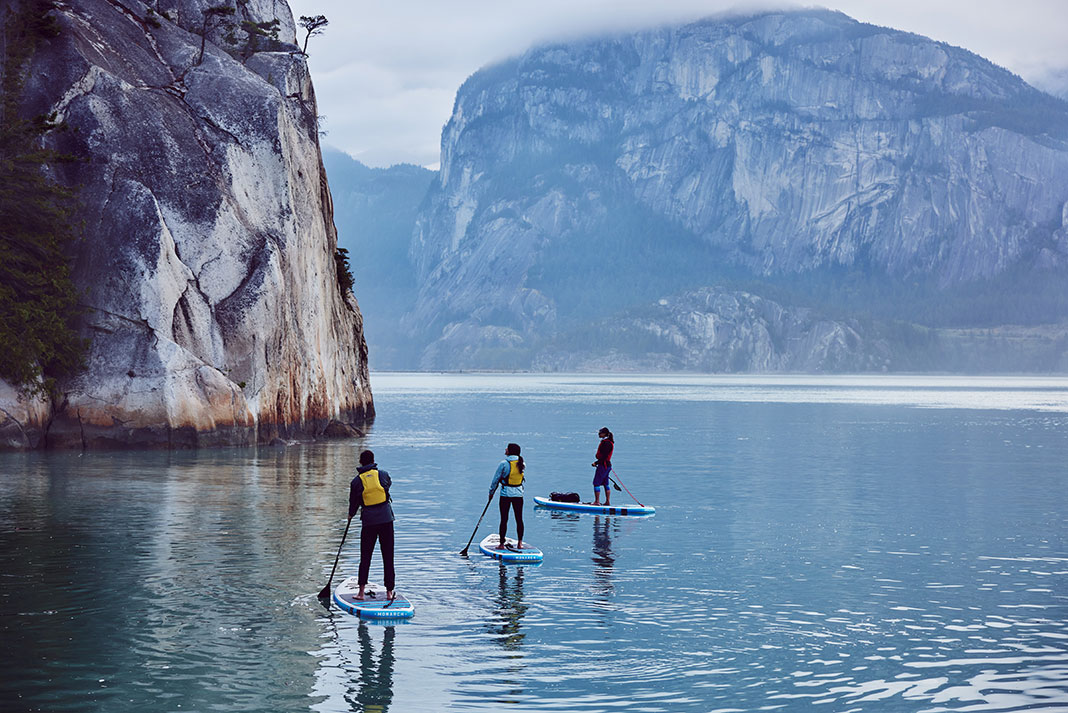
Squamish: Best for off-season adventures
When to go: Autumn
It’s only a 50-minute drive to Squamish from Vancouver—which means it takes less than an hour to be transported to some of the province’s best standup paddleboarding and ocean kayaking experiences in British Columbia.
The proximity to Vancouver is also a testament to why the shoulder season is the best time to put your paddle in the water. Summertime swells can make paddling through Howe Sound challenging. Yet, once the leaves start to fall, the weather calms, turning the 46-kilometer stretch from Squamish to the Strait of Georgia into a tranquil paddle.
Even the 411-hectare Alice Lake Provincial Park is made better by the cooler months, when crowds thin out and it’s easier to book a campsite. Then again, if you just want to visit for the day, this is the perfect put-in spot for canoes and SUPs, with its stunning views of the nearby mountains. This is Squamish kayaking at its finest.
Of course, if you do want to visit during the summer, this is when you can experience Squamish rafting down the glacier-fed Cheakamus River, with something for all skill levels. The lower section features class II and III rapids, making it better for beginners, while the upper section offers more skilled paddlers a chance to tackle class IV whitewater.
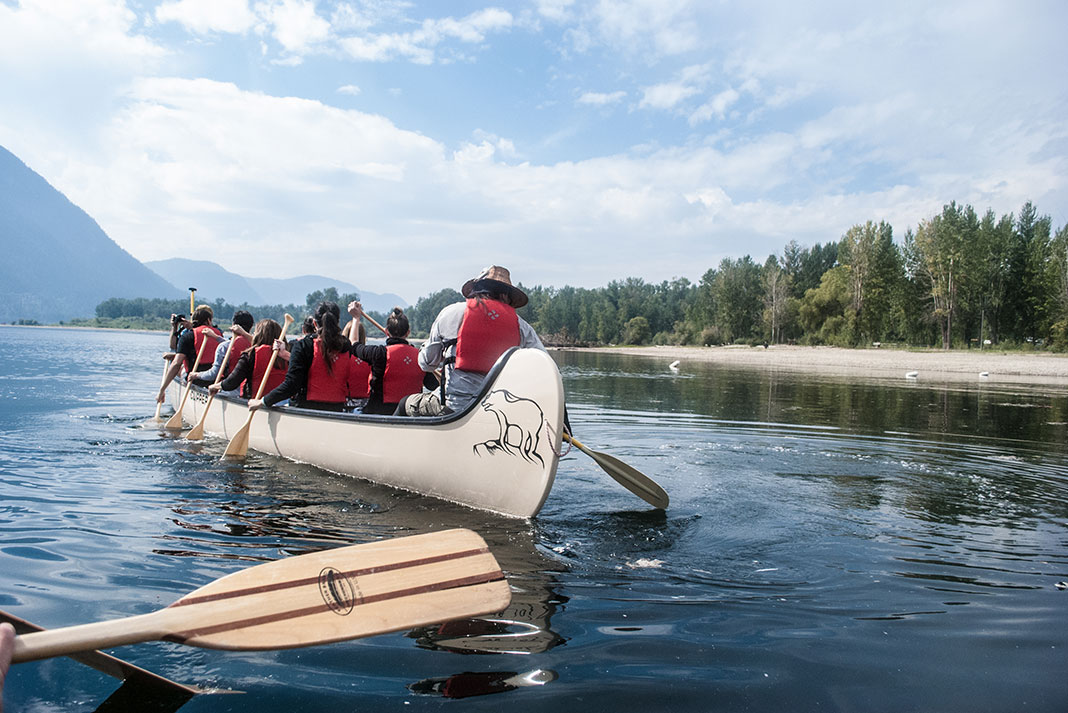
Kamloops: Best for beginners and history buffs
When to go: Summer
You’d think Kamloops’ biggest selling point would be that there are over 100 easy-to-access lakes within a one-hour drive of this city. While we can’t deny that it’s a serious part of its allure, it also offers unique guided trips for those who want to immerse themselves in another culture.
Moccasin Trails, a member of Indigenous BC, offers a River Setétkwe Tour. You’ll spend 90 minutes canoeing down the South Thompson River, where you’ll learn more about the history of the Shuswap peoples. Traditional songs will be the soundtrack as you paddle through the city of Kamloops.
Meanwhile, those who are new to paddling will love a trip to Heffley Lake. All SUP rentals from the lakeside Paddlesurfit come with a mini-lesson, while those who are stopping and staying a while will find ample opportunities to upskill, including from the Kamloops Canoe & Kayak Club.
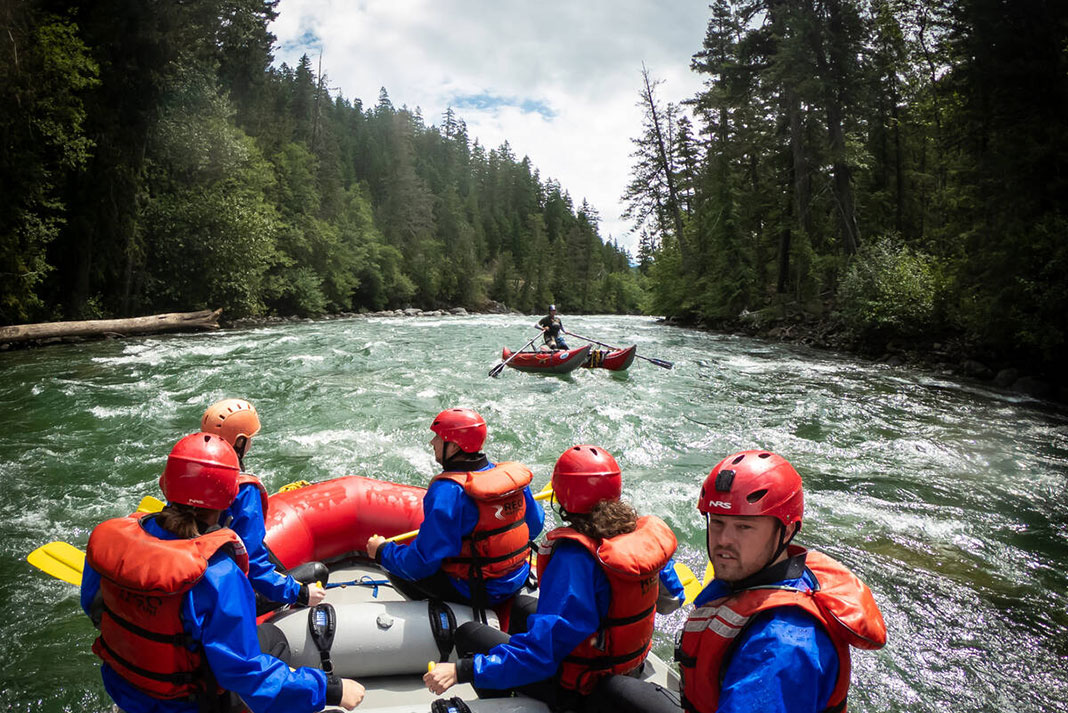
Hope, Cascade and Canyons: Best for a family-friendly long weekend
When to go: Summer
Drive 90 minutes inland from Vancouver and you’ll arrive in Hope, through which the Fraser River flows. Here, you’ll also find the calm waters of Kawkawa Lake and Lake of the Woods, along with ample wildlife spotting opportunities. Bird-watchers flock here for the more than 300 species that migrate through or reside in the area, while 41 species of fish can be found in the Fraser River.
It’s an easy day trip, but to do it in a day means missing out on the REO Rafting Resort, just over an hour north of Hope. Although it was originally created as a whitewater rafting resort, with direct access to the 24 action-packed rapids of the Nahatlatch River, it’s since evolved to feature luxurious glamping tents and yoga. All-inclusive packages are available, and excursions include scenic float trips, kayaking, SUPing, hiking, cliff jumping and a kids’ camp.
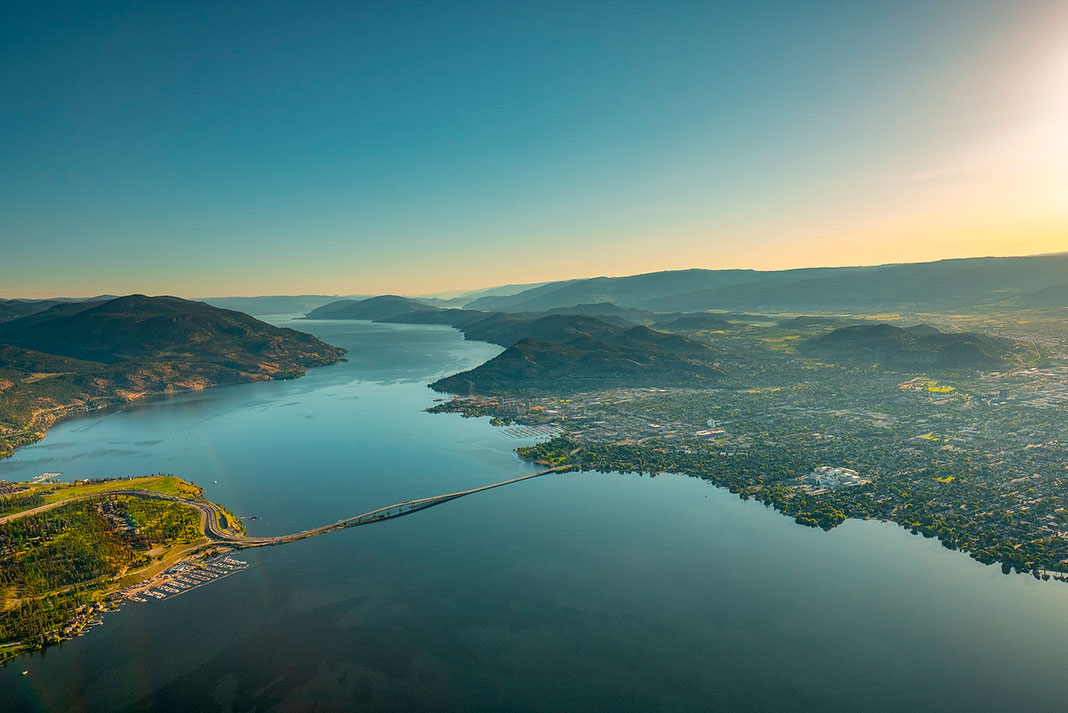
Kelowna: Best for exploring by paddle
When to go: Spring
Kelowna is a beloved vacation destination, and its water offerings play no small part in this status. It’s no secret that you can kayak Kelowna, paddleboard Kelowna, canoe Kelowna… just about the only thing you can’t do is go whitewater rafting in Kelowna. The closest place to do that is in Revelstoke, roughly 2.5 hours away, with operator Wild Blue Yonder.
But did you know Kelowna is also home to a paddle trail? Starting from McKinley Beach and running to Bertram Creek Regional Park, this 27-kilometer trail on Okanagan Lake paddles past over 20 beaches and parks, two bird sanctuaries and the city’s downtown. Although the water is cooler during the spring and fall, conditions may be calmer—and you won’t have to battle the crowds.
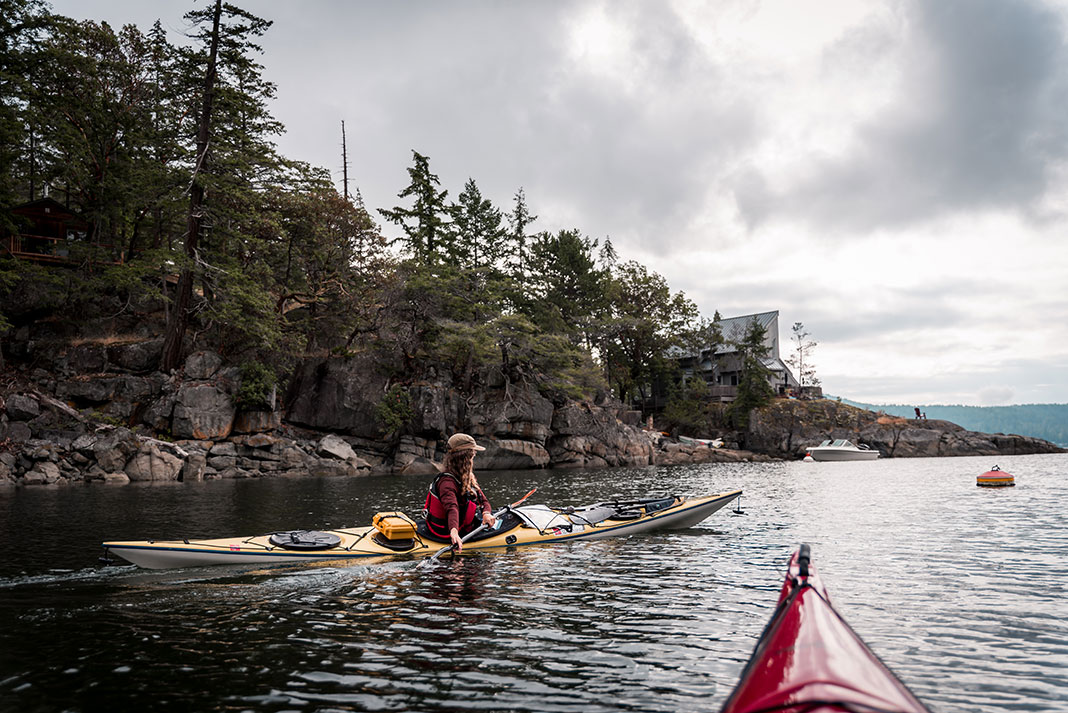
Sunshine Coast: Best for those looking for variety
When to go: Spring
Easy to access from Vancouver, yet still a world all of its own, the Sunshine Coast has something for everyone, with its bays, fjords, freshwater lakes and islands to explore. Situated north of Vancouver, it’s buffered from rough ocean weather by Vancouver Island, offering hundreds of kilometers of sheltered shoreline. Although kayaking the Sunshine Coast is the most popular activity, it’s also great for SUPers and canoeists.
This isn’t a region for those who have decision fatigue. You could spend the day canoeing down the Powell River. You could sea kayak through the waters of Desolation Sound—the province’s largest marine park—and spend your nights backcountry camping on remote islands. You could try to tackle the Powell Forest Canoe Route, a 57-kilometer journey that spans eight lakes and takes roughly five days to complete. You can even whitewater kayak on the Skookumchuk Narrows, where the tide change results in spectacular whirlpools and wild rapids.

Nanaimo and the Southern Gulf Islands: Best for marine wildlife watching
When to go: Spring or Fall
There’s a reason why the Southern Gulf Islands—situated off Vancouver Island’s eastern coast—have been designated by Parks Canada as a National Park Reserve. The sheltered and islet-dotted waters are a haven for marine wildlife, including seals, otters, orcas, porpoises, eagles and other seabirds.
Whether you’re on a day trip or a multiday excursion, sea kayaking is a chance to get closer to nature. You can explore the rock formations of the island clusters closest to Gabriola Island, camp on empty beaches, or paint patterns in the sea thanks to the bioluminescent plankton.
You can start your adventure with one of the outfitters scattered across the islands or from Nanaimo, which is a gateway to the BC Marine Trails Network and the nearby Saysutshun (Newcastle Island) and Protection Island.
Like the other coastal destinations on this list, Nanaimo is a prime shoulder season destination. This is when the weather stabilizes, making sea kayaking and paddleboarding a more beginner-friendly affair.
The diverse paddling available year-round means you’ll have no shortage of destinations to choose from in British Columbia, and these picks are just the beginning. Take a trip to Paddle BC, and you’ll find more about the various paddling adventures the province has to offer.



